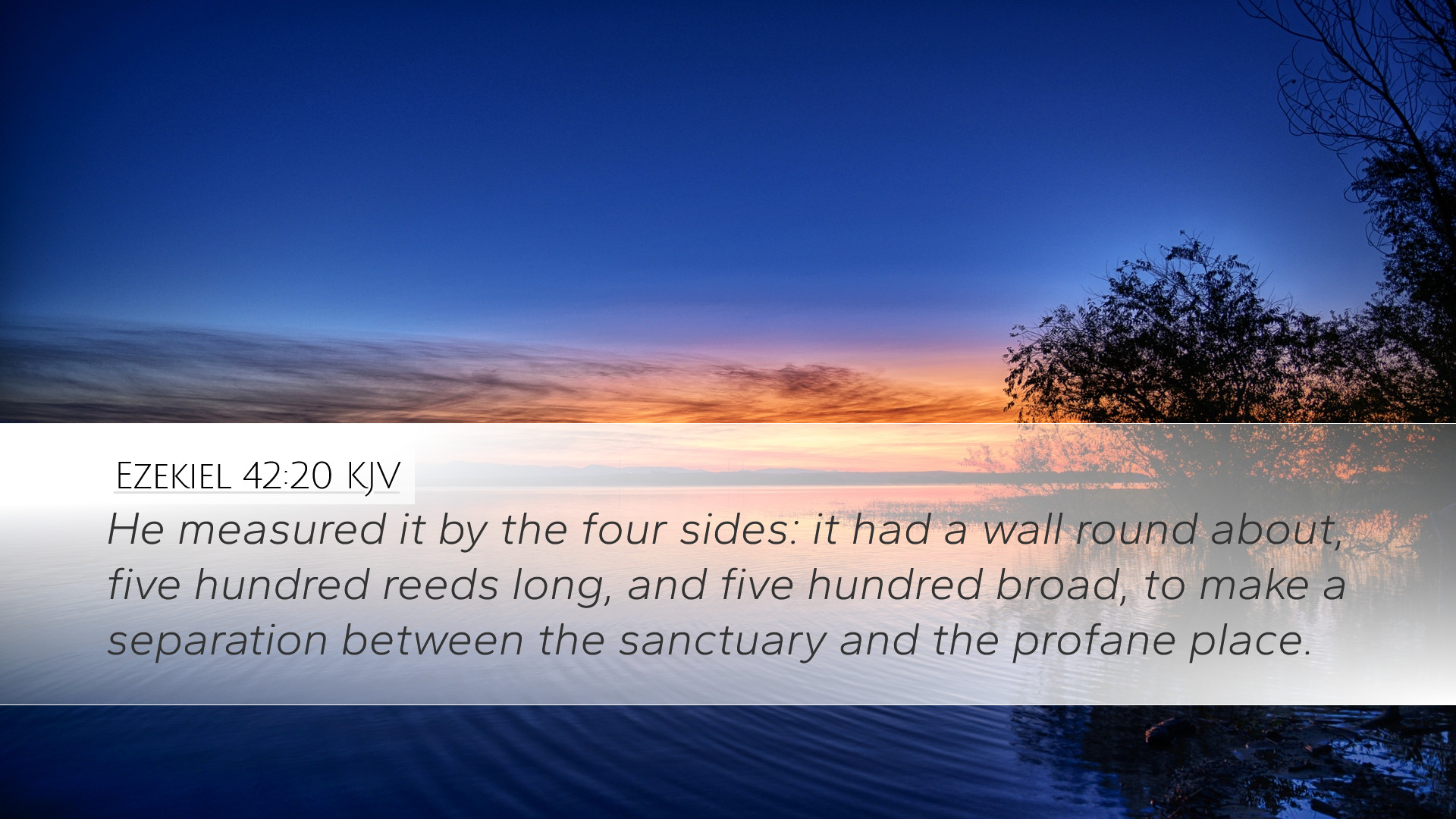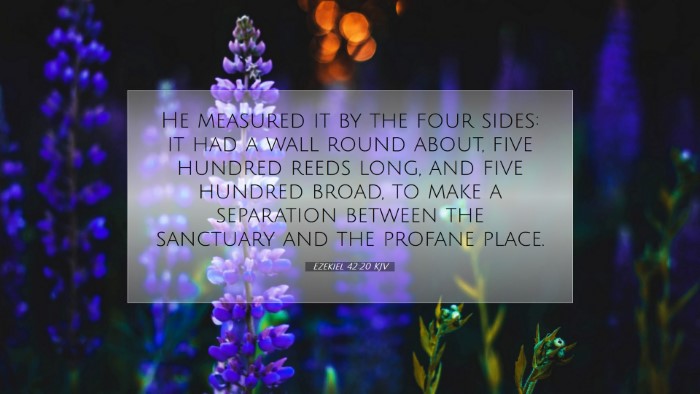Ezekiel 42:20 Commentary
Verse: Ezekiel 42:20 (ESV): "He measured it on the four sides; it had a wall around it, 500 cubits long and 500 cubits broad, to make a separation between the holy and the common."
Historical Context
The book of Ezekiel, written during the Babylonian exile, addresses the Israelites' loss of their homeland and the temple. Ezekiel, a priest and prophet, combines visions of judgment with hope for restoration. In this chapter, he describes a vision of a new temple, delineating the boundaries of sacred space.
Exegesis and Analysis
This verse plays a crucial role in clarifying the spatial dimensions and significance of the temple layout. The measurement signifies not just physical dimensions but also spiritual implications.
Divine Measurement
The idea of God measuring the temple indicates divine authority over sacred space. Albert Barnes observes that the act of measurement symbolizes God's desire for order and separation between the sacred and the profane.
Significance of Separation
- Holiness: The separation from the common is vital as it emphasizes God's holiness. This is noted by Matthew Henry, who explains that the temple represents the heavenly realities, and thus, the common cannot intrude into the sacred.
- Restoration: Adam Clarke highlights this separation as a promise of restoration. The Israelites, having been in exile, are reminded that God will again dwell among them, but within a structure defined by holiness.
Theological Implications
The implications of this verse extend into modern theological thought, encouraging reflection on how the church today draws boundaries between the sacred and secular. The clear distinctions made in Ezekiel's vision challenge contemporary believers to consider the sanctity of worship space and personal lives.
Holiness in Practice
Matthew Henry notes that maintaining a separation between the common and holy is not merely a physical reality but requires an intrinsic disposition of the heart. Believers must cultivate holiness in their lives, as the temple is no longer a single space but comprises all faithful believers.
Application for the Church
- Community Worship: As church leaders and congregants assess worship spaces, they are called to honor God’s holiness. This means establishing environments that foster genuine worship and spiritual growth.
- Personal Holiness: Individually, believers are tasked with avoiding comparisons between sacred and secular living, recognizing that every aspect of life can point to God's glory.
Lessons from the Measurements
The specific measurements (500 cubits on each side) serve as a reminder that God has set limits to grace and mercy, extending the invitation to holiness while maintaining the reality of divine judgment. This structure signifies God's order in life and worship.
Albert Barnes elucidates that precise measurements reflect God's intentional design for His people, urging pastors and scholars to convey the importance of understanding and respecting God’s order in their ecclesiastical structures.
Conclusion
In conclusion, Ezekiel 42:20 presents a profound understanding of how God measures out holiness and calls His people to distinguish between the sacred and the common. For pastors, theologians, and students of the Word, this passage is a rich source for exploring the themes of holiness, community, and the presence of God.
As we reflect on this scripture, let us be reminded of our own call to sanctity, honoring the holy spaces and lives God has entrusted to us. May we, like the Israelites receiving Ezekiel's vision, grasp the importance of boundaries established by God that lead to restoration and deeper communion with Him.


